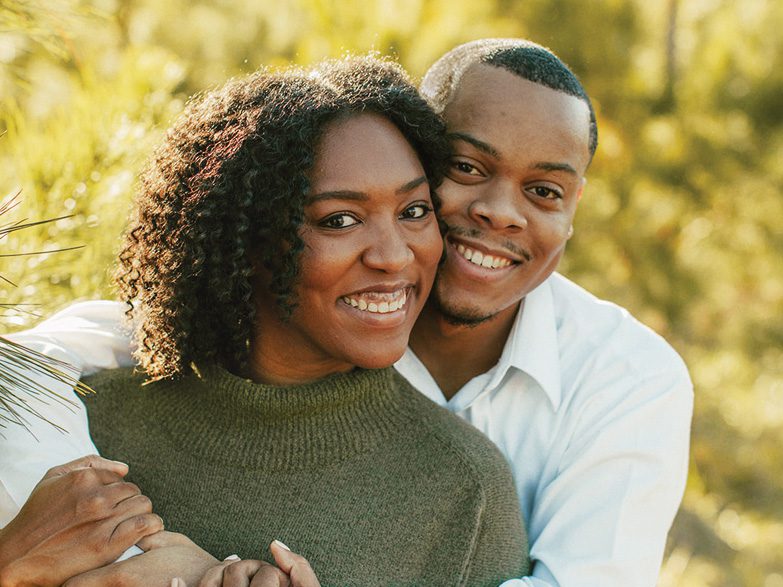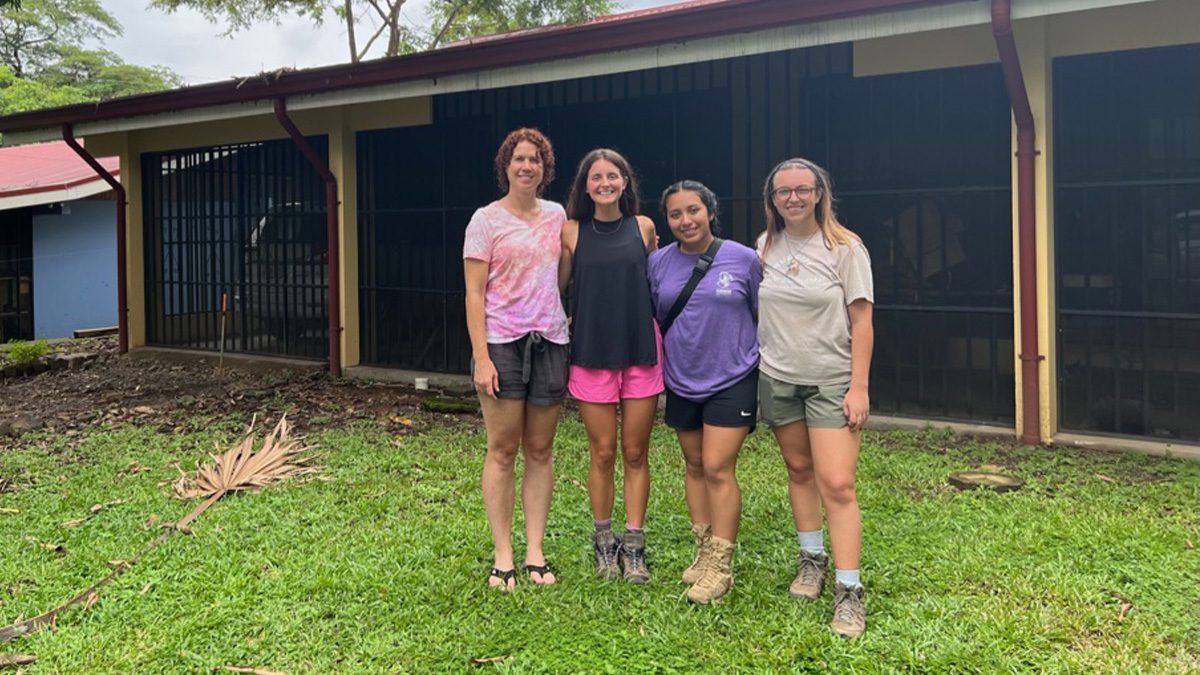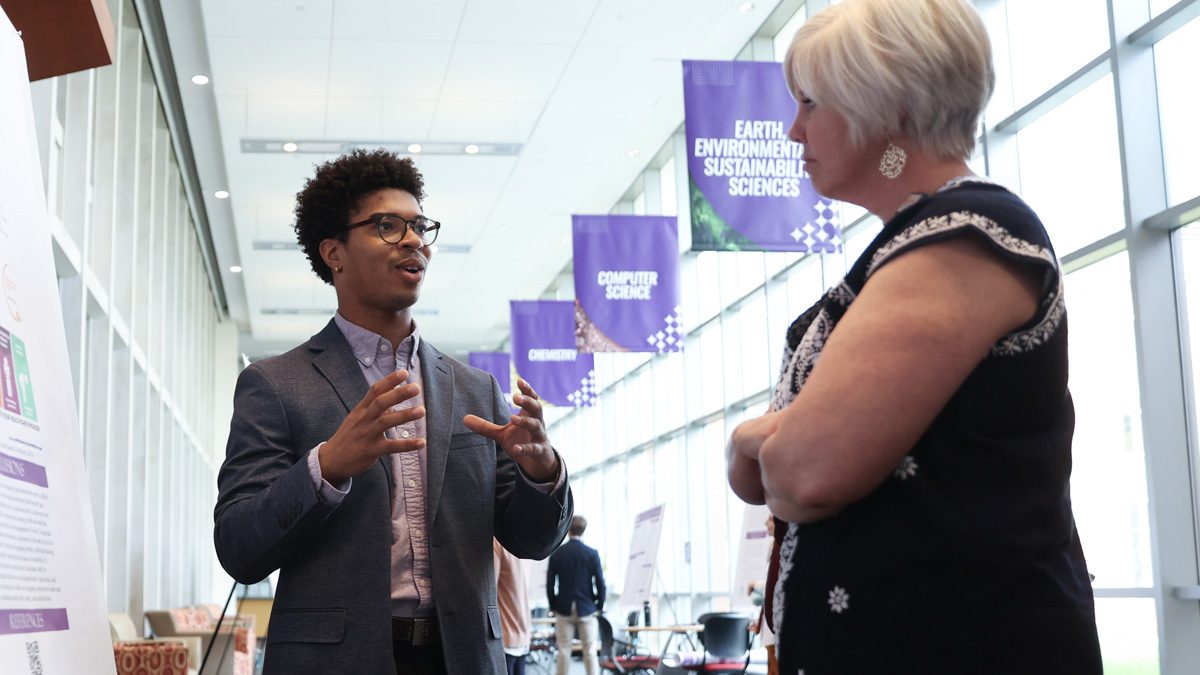
Around The Lake
Furman Engaged 2022 - Experience, Discover, Share
At this year’s event, students invited the campus community into their research, service learning, creative works and other engaged learning experiences.
Staff Report
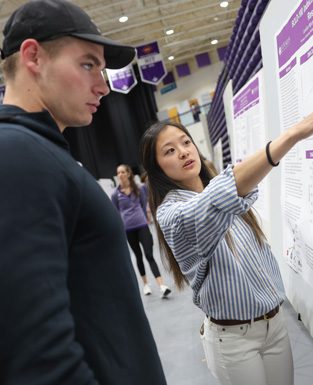
Caroline Nguyen ’23 explains her research to Seth Laughter, a former assistant coach with the strength and conditioning team.
From the stage to the field, from the lab to the community – and many other locations – the 14th annual Furman Engaged took us up close to students’ engaged learning experiences.
On April 12, some 700 students presented and reflected on their research, internships, study away, creative works and other projects, and in doing so took the final step of their journeys: the public sharing of their work. Here are just a few of the immersive opportunities that Furman students shared with their peers, faculty, staff, employers, alumni and the broader community.
Small versus ‘smol’
It’s more than a spelling preference. Ellie Winters ’22, an anthropology major and linguistics minor, investigated the origins and peculiar characteristics of a word coined on the internet: “smol.” The term, often used to describe cute, petite creatures, crosses the border between the written and spoken word, her research found, with the “o” in “smol” representing a “graphic and phonetic roundness” that adds to its meaning.
Crucial conversations
When the phone rang at 2 a.m., Miriam Stevens ’22 picked up.
She was an intern working the 6 p.m.-6 a.m. shift for the Julie Valentine Center, one of 14 rape crisis centers in South Carolina. Stevens had completed 29.5 hours of training, but when it finally came to counseling those in crisis, the interactions were intense. Fortunately, she had Jamika Nedwards, the crisis program director, to guide her.
Nedwards noticed that Stevens had been able to soothe clients simply by being herself instead of trying to be clinical.
“After that, I hope that that is what I brought into all the calls,” Stevens said. “Who knows, maybe I am the one person on the outside telling them that they were brave.”
The marriage pay bump
It pays to pair up. Lindsey Diehl ’22 and Cabot Fowler ’22 asked if the marriage premium – that married men earned more than unmarried men in the 20th century – still existed, and they expanded it to include women. Using a fixed-effect regression model, they found that married men make 8.6% more than never-married men, and married women make 3.8% more than never-married women.
A simpler prescription
In her research, biology major Taylor Carson ’22 became familiar with members receiving services from Gateway, a local nonprofit that connects those with mental illness with various types of support, including concurrent psychiatric care and a medication regimen. As a case study, she focused on bipolar disorder,
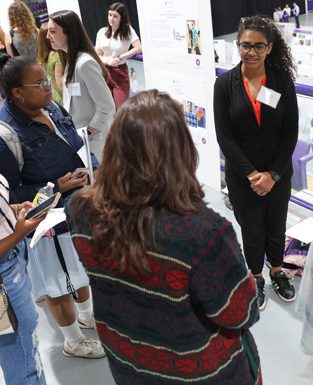
Presenter Taryn Marks ’23 (facing) speaks with peers at The Herman W. Lay Physical Activities Center.
which manifests as a continuum of mania (highs) and depressions (lows) with periods of normalcy, to examine calcium channel blockers. Carson cited research that found calcium-signaling dysregulation to be responsible for a lot of the mood fluctuations associated with bipolar disorder. The condition is largely treated
with pharmacological products, which can have serious side effects.
“It’s also hard to manage this concurrent care where we have multiple medications that include antipsychotics, antidepressants and anticonvulsants,” she said. A lot of research focused on genetics, she said, which has been important in identifying heritable factors but has not been as good at helping with managing the disorder itself.
“So because of that, a lot of these new treatments are focused on developing new drug targets, such as calcium channel blockers, which is really important,” said Carson, “because if they’re able to block the up-regulation of calcium, they may be able to better regulate moods with perhaps one medication rather than using a lot of concurrent therapy.
Photos by Jeremy Fleming ’08
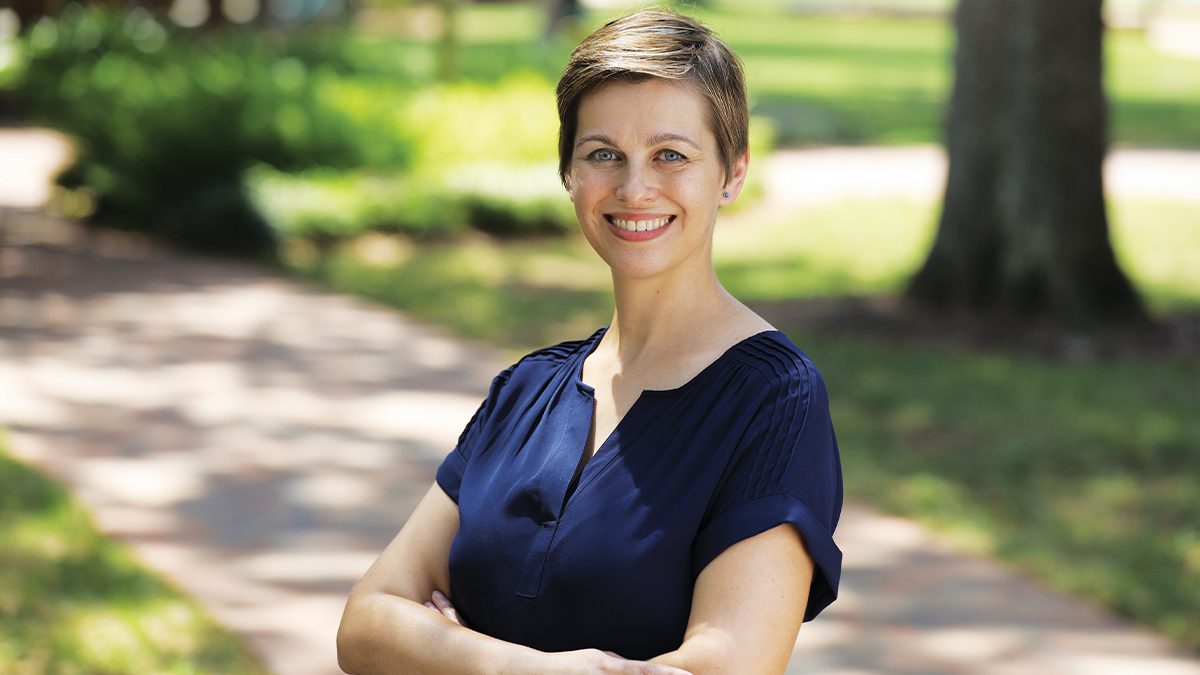
Every first- and second-year Furman student participates in the Pathways Program, a new two-year course focused on mentoring, reflection and belonging.
